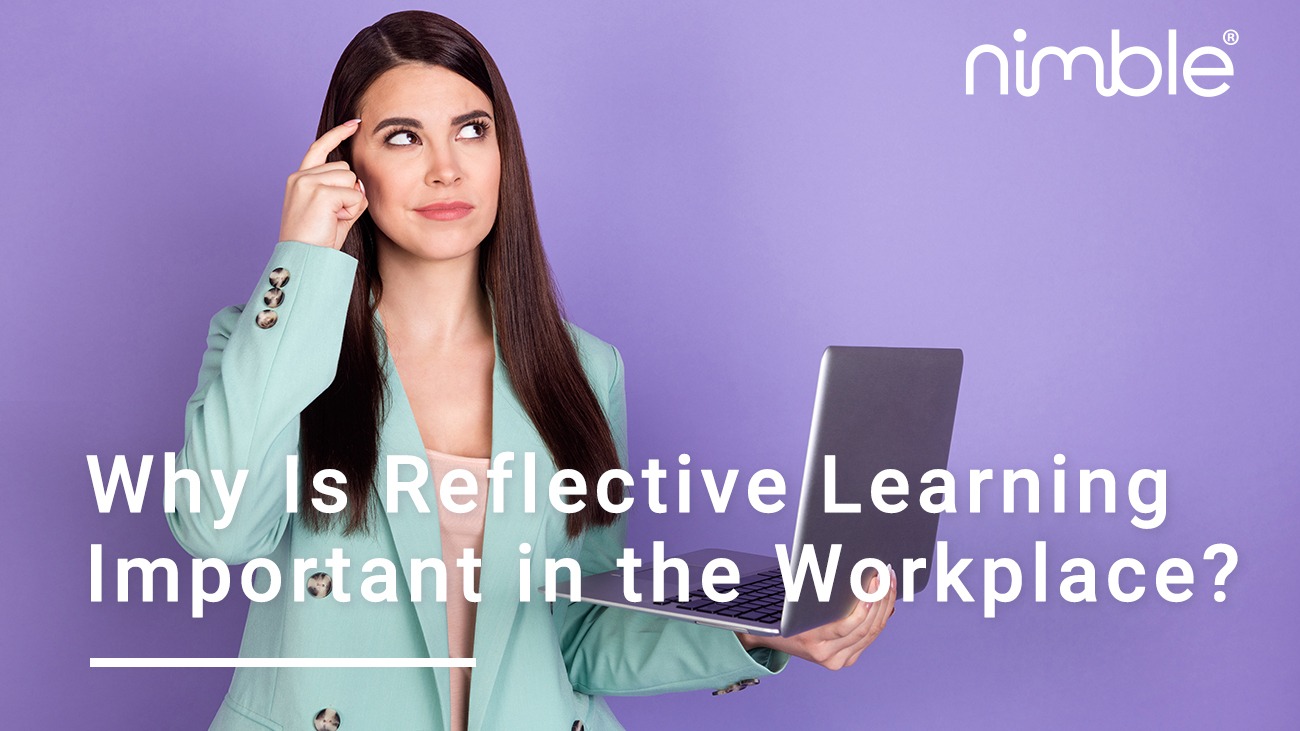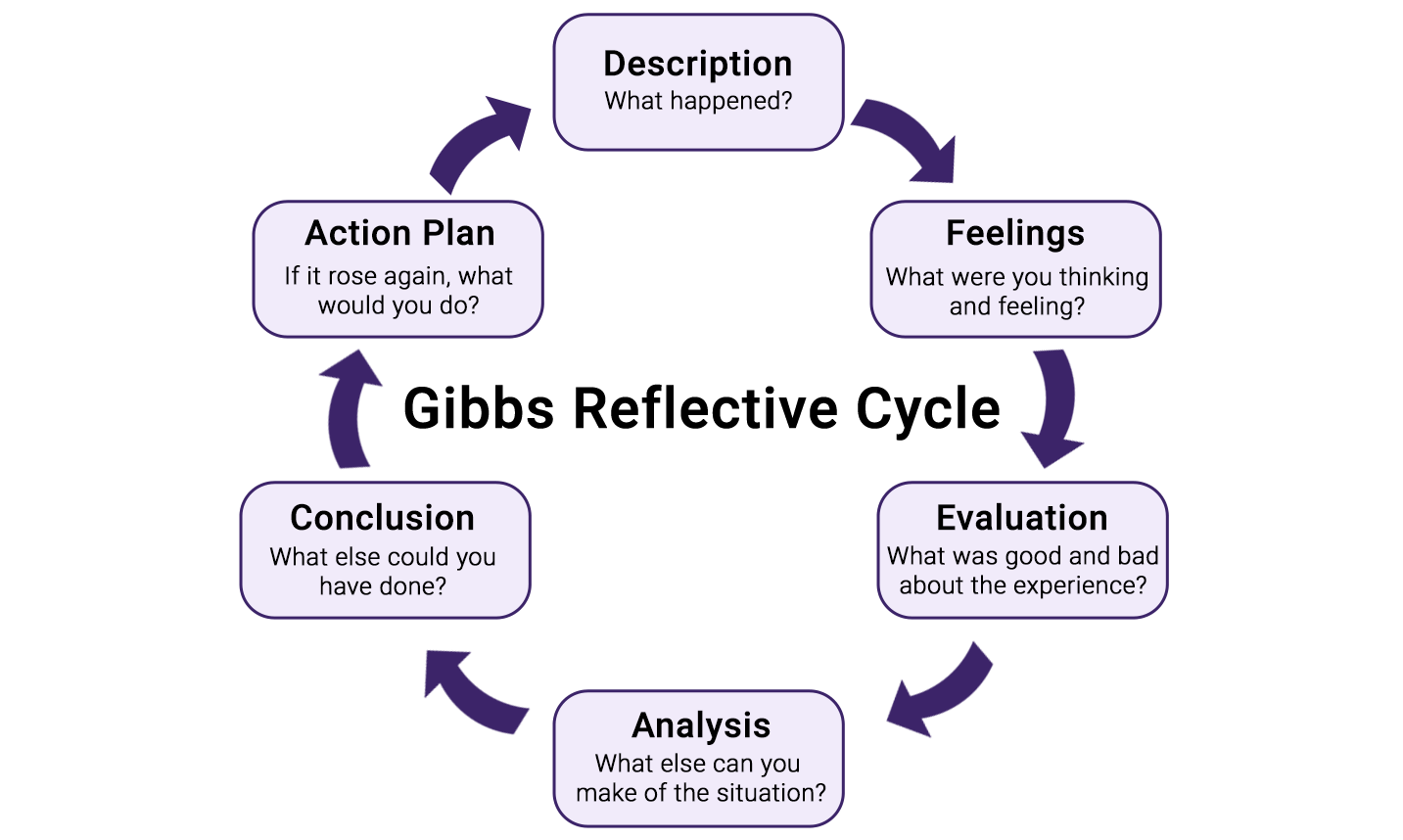
Life at work can be fast-paced, with little time to sit and reflect on what we’ve done and how we could improve. Time is in short supply for most employees, including those of us working in Learning and Development (L&D) functions. But if you’re building a culture of learning, one of the most important things you can do is to encourage self-reflection across all levels of your organisation; without examining what we’ve achieved (or failed to achieve), there can be no true development. So, what exactly is reflective learning, and how can you apply its lessons?
Being self-aware
“Self-awareness gives you the capacity to learn from your mistakes as well as your successes. It enables you to keep growing.”
As the American business guru, Larry Bossidy, makes clear, we need to be self-aware if we are to develop. It applies just as much in our professional lives as our personal ones, and is a critical skill for learning: what do you know, what do you need to know, and can you be honest with yourself about it?
Mirror, mirror…
Do you remember the Evil Queen in Snow White? Her ruthless approach to being named the most beautiful woman in the land led her to try to murder the incumbent. Of course, she would have been better off finding ways to improve herself. But that’s villains for you!
What has the Evil Queen got to do with learning? Think about the people you’re tasked with developing in your role. To what extent do you encourage your learners to understand themselves? How do they find out what they’re good at? How do they focus their attention on their self-development?
The danger is, rather like the Evil Queen, if learning is imposed by other people (who have their own metrics) it can cause learners to react to external validation only. They’re encouraged to measure themselves by what everyone else thinks (and this can lead to low self-esteem). Whereas, when learning addresses internal needs, it brings personal satisfaction. It enhances motivation and goal setting.
Of course, every organisation needs to provide training to achieve company goals. We’re not suggesting you forget those compliance courses everyone needs to complete. What we’re saying is that training should include personal development – and it should have equal status.
Questions to ask yourself
In the spirit of self-reflection, let’s ask ourselves a few questions about the way we relate to learners in our own roles.
- How much value is currently placed on your learners knowing their personal strengths and areas for development?
- To what extent do they have a say in developing these areas? If the answer to that question is “none” – are you in danger of imposing entirely external validation?
- How do learners feed back to you about their training?
- Do they only respond to questions about the course itself?
- Can they suggest perceived needs in an open forum?
- Can they suggest perceived needs privately to managers?
- Is there a representative panel which consults with the workforce?
- Is training always geared to ‘hard’ goals (such as company targets) or are there opportunities for ‘soft’ goals – such as the acquisition of things like leadership, types of communication or even resilience (which, of course, will eventually impact those targets)?
- Do learners have an opportunity to reflect on their own learning and how they’ve applied it in their role?
If these questions have made you realise this could be an area of development for you or your organisation – firstly, congratulations! You’re already becoming a more reflective learner. Now read on to find out more about reflective learning and some practical ways to implement it in your L&D strategy.
Models of reflective learning
Over the decades, researchers and theorists have created a number of models to help build a framework around reflective learning – and luckily, they’re rooted in experience and practice, providing example questions to shape your own reflections.
Gibbs reflective cycle
This is probably the best-known model, and breaks down the stages of reflective learning into a simple cycle:

It’s useful for guiding you through reflection on a specific experience, helping you to unpick what happened and why in order to improve the next time you encounter a similar situation.
Rolfe et al’s framework for reflexive learning
This model is a little more recent, and is built around three key questions:
- What?
- …actions did I take?
- …problem occurred?
- …was good or bad about the experience?
- So what?
- …does this tell me about myself?
- …could I have done to make it go a bit better?
- …issues have arisen from this experience?
- Now what?
- …might be the consequences?
- …do I need to do in order to improve next time?
- …other factors can I change in future?
This model provokes some quite involved responses, and is fairly probing, but provides a robust framework for experienced learners and practitioners to examine their own thoughts, feelings and actions.
Reflection in the workplace
All this theory is great, but how can we apply the notion of reflective learning in our own workplaces, as L&D professionals? First, we can apply some of these principles ourselves as we plan, deliver and evaluate learning programmes. It’s always worth evaluating what went well, what could be improved, and how we can move on from where we are.
We can also encourage reflective behaviour in the learners we support. This is important for two reasons: it develops employees’ ability to examine their actions and continually improve, but it also has a positive impact on learning itself. Reflection is really a type of practice, and this can help to cement learning in the brain. When you think about what you’ve learned, connect that learning to new experiences and then consider what you might do differently next time around, you’re strengthening those cognitive connections.
Give learners the opportunity to reflect regularly on their own strengths and weaknesses, without judgement. After a training opportunity has been provided, make sure you don’t just ‘set it and forget it’; to truly embed learning, we need to revisit how we’re getting on and what impact the experience has had on our daily work. This could be as simple as check-in conversations with a line manager, or take the form of regular prompts to encourage reflection. Be creative: these might be quick emails, short surveys, peer group meetings or even personalised ‘reflection diaries’ – forming part of a blended learning approach.
Reflection is a skill. As the famous American dancer and choreographer Twyla Tharp once said,
“No one is born with skill. It is developed through exercise, through repetition, through a blend of learning and reflection that’s both painstaking and rewarding.”
Time is precious in the workplace, and even more so when it comes to learning, but time spent reflecting is possibly the most precious of all. How have you encouraged reflective practice in your organisation? Is it something you’ve undertaken personally and would now like to roll out as part of your approach to L&D? Let us know by visiting our stand below and making contact.




